
USS Du Pont (DD–152) was a Wickes-class destroyer in the United States Navy during World War II, later reclassified as AG-80. She was the second ship named for Rear Admiral Samuel Francis Du Pont.

USS Ellis (DD–154) was a Wickes-class destroyer in the United States Navy during World War II. She was reclassified AG-115 on 30 June 1945. She was named for Chief Yeoman George Henry Ellis.

USS Goff (DD-247) was a Clemson-class destroyer in the United States Navy during World War II. She was named for Secretary of the Navy Nathan Goff, Jr.
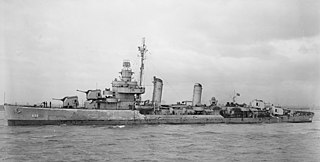
USS Knight (DD-633), a Gleaves-class destroyer, is the only ship of the United States Navy to be named for Admiral Austin M. Knight.

USS Doran (DD-634), a Gleaves-class destroyer, was the second ship of the United States Navy to be named for Medal of Honor recipient John James Doran.

USS Cowie (DD-632), a Gleaves-class destroyer, is the only ship of the United States Navy to be named for Rear Admiral Thomas Jefferson Cowie.

USS Fitch (DD-462/DMS-25), was a Gleaves-class destroyer of the United States Navy.
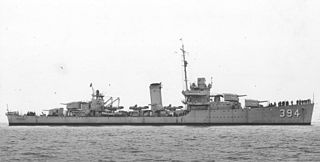
The second USS Sampson (DD-394) was a Somers-class destroyer in the United States Navy. She was named of William Thomas Sampson a rear admiral known for his victory in the Battle of Santiago de Cuba during the Spanish–American War.

USS Weeden (DE-797) was a Buckley-class destroyer escort in service with the United States Navy from 1944 to 1946 and from 1950 to 1958. She was scrapped in 1969.

USS Spangenberg (DE/DER-223), a Buckley-class destroyer escort of the United States Navy, was named in honor of Gunner's Mate Kenneth J. Spangenberg (1922-1942), who died as a result of wounds suffered during the Naval Battle of Guadalcanal, while serving aboard the heavy cruiser San Francisco (CA-38). He was posthumously awarded the Navy Cross.

USS Alexander J. Luke (DE/DER-577), a Buckley-class destroyer escort of the United States Navy, was named in honor of Sergeant Alexander J. Luke (1916–1942), who was killed in action during the attack on Tulagi on 6 August 1942. He was posthumously awarded the Silver Star.

USS Laning (DE-159/APD-55) was a Buckley-class destroyer escort in service with the United States Navy from 1943 to 1946 and from 1951 to 1957. She was scrapped in 1975.

USS Steady (AM-118) was an Auk-class minesweeper acquired by the United States Navy for the dangerous task of removing mines from minefields laid in the water to prevent ships from passing.
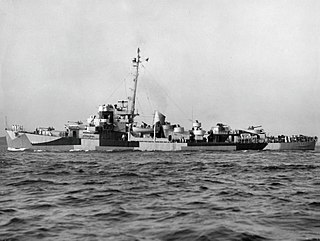
USS Smartt (DE-257) was an Evarts-class destroyer escort of the United States Navy during World War II. She took part in operations in the Atlantic Ocean to protect convoys and other ships from German submarines and fighter aircraft. She performed escort and antisubmarine operations in battle areas before sailing home at the end of the conflict.

USS Tomich (DE-242) was an Edsall-class destroyer escort in service with the United States Navy from 1943 to 1946. She was scrapped in 1974.
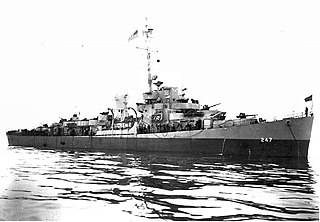
USS Stanton (DE-247) was an Edsall-class destroyer escort built for the U.S. Navy during World War II. She served in the Atlantic Ocean the Pacific Ocean and provided destroyer escort protection against submarine and air attack for Navy vessels and convoys.

USS Strickland (DE-333) was an Edsall-class destroyer escort in service with the United States Navy from 1944 to 1946 and from 1952 to 1959. She was sold for scrapping in 1974.
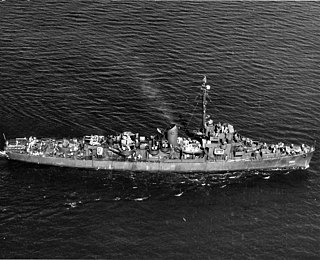
USS Rhodes (DE-384) was an Edsall-class destroyer escort in service with the United States Navy from 1944 to 1946 and from 1955 to 1963. She was scrapped in 1975.

USS Cockrill (DE-398) was an Edsall-class destroyer escort in service with the United States Navy from 1943 to 1946. After spending decades in reserve, she was sunk as a target in November 1974.

USS George A. Johnson (DE-583) was a Rudderow-class destroyer escort serving with the United States Navy from 1944 to 1946. From 1946 to 1957, she was used as a Navy Reserve training ship. She was scrapped in 1966.





















